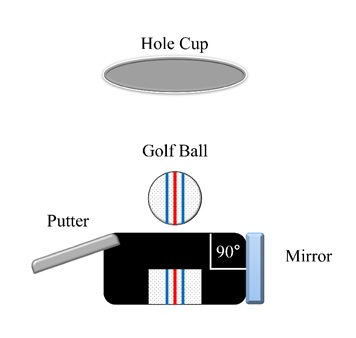Effects of aiming lines and visual function on the golf putting alignment
Medical hypothesis, discovery & innovation in optometry,
Vol. 2 No. 1 (2021),
16 June 2021
,
Page 41-49
https://doi.org/10.51329/mehdioptometry124
Abstract
Background: In golf, a player hits a ball with a club, aiming to transfer the ball successively into a series of hole cups in a course consisting of 18 (or fewer) holes. This study aimed to compare the impact of visual function and the presence and number of aiming lines on golf putting alignment between beginner and expert golfers.Methods: In this prospective comparative study, 43 participants with a mean ± standard deviation (SD) of corrected distance binocular visual acuity of –0.07 ± 0.74 logarithm of the minimum angle of resolution, who knew their average golf scores, were divided into beginner and expert golfers. Six visual function tests were conducted to assess heterotropia, dominant eye, verification of current spectacles, static visual acuity, stereopsis, and fixation disparity. At the putting distances of 1.5 m and 3 m, alignment errors were measured five times each, using golf balls with 1 and 3 aiming line(s) and putters with 1 and 3 aiming line(s).
Results: The mean ± SD of age was 48.33 ± 10.07 years for study participants overall. The accuracy of ball alignment was not affected by the career or number of aiming lines, but the putter alignment was higher for the 3-lines putter than for the 1-line putter (P < 0.05). When the number and shape of the aiming line were the same for both the ball and putter, the aiming accuracy was found to be higher. In both stereopsis and fixation disparity, the combination of putting distance and a 3-lines ball showed negative values; all other combinations showed positive values, but no statistically significant correlation was detected (all P > 0.05).
Conclusions: The accuracy of golf ball alignment did not depend on the number of aiming lines and the golfer’s career. However, the predicted putting success rate and subjective satisfaction were increased when three-line golf balls and putters were used, as compared to when one-line golf balls and putters were used.
Keywords:
- aiming line
- putting
- alignment
- dominant eye
- sport vision
- golfer
- golf ball
- putter

- Abstract Viewed: 232 times
- Full Text PDF Downloaded: 0 times